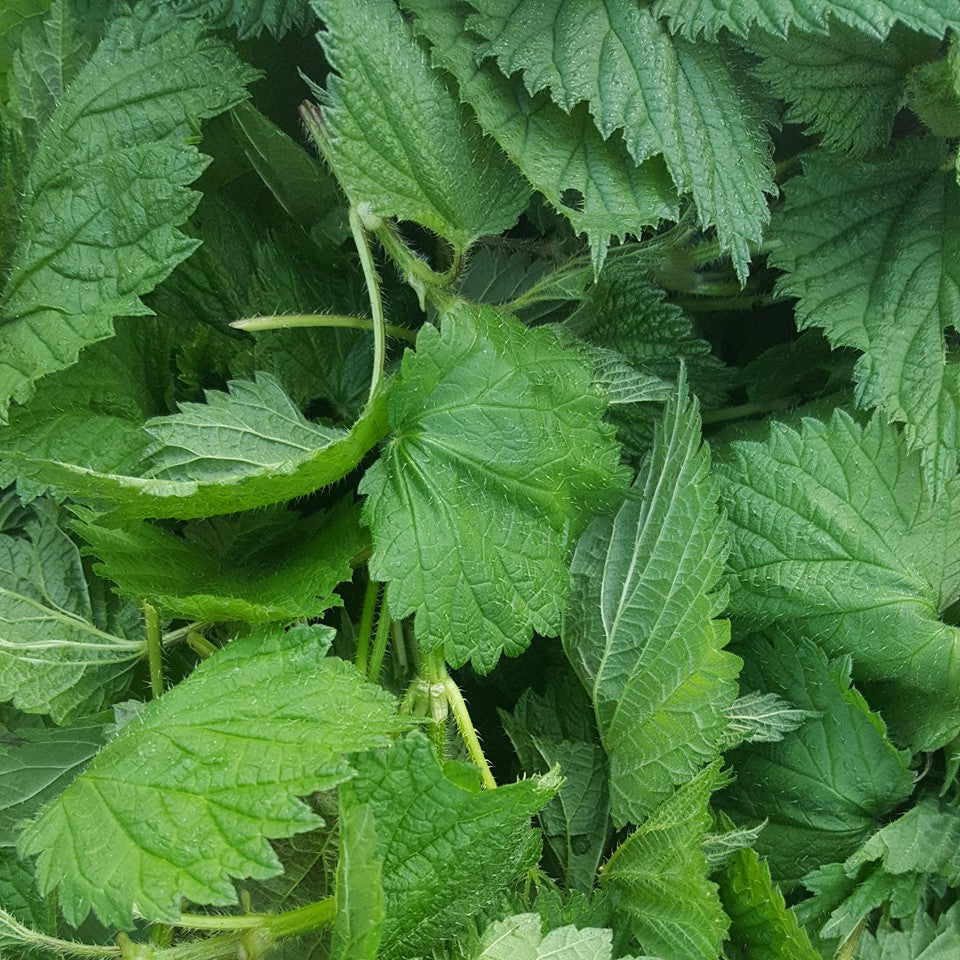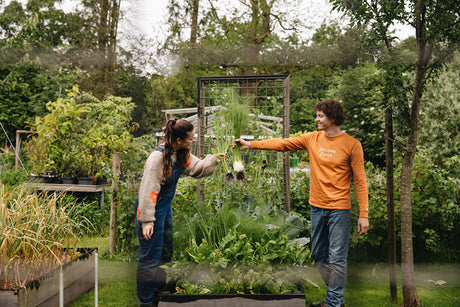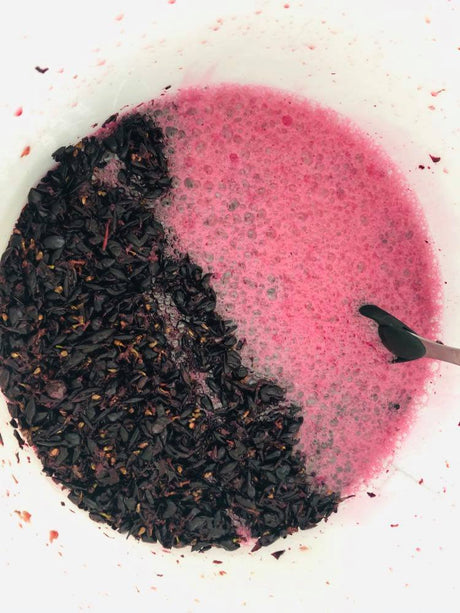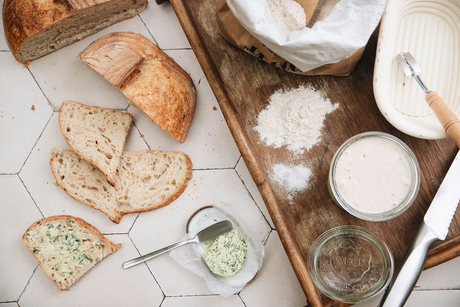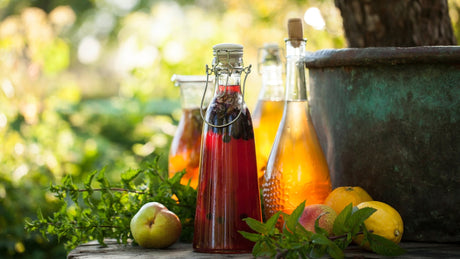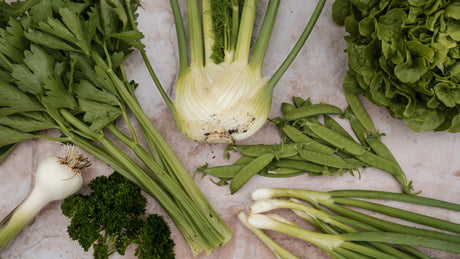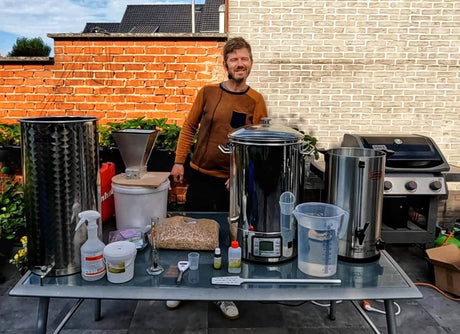Making nettle manure and using it as fertilizer in our vegetable garden
Nettles ( Urtica dioica) are often considered annoying. It is an ON-weed. Actually it is just a plant like any other but because the plant multiplies itself very quickly and does not have a purpose for everyone right away, it is called a weed. But if you can use the plant to your advantage then this prickly plant is a welcome guest in the vegetable garden for me. You can make tea from it but especially you can make a manure from it that is full of nutrients for your plants. So just like comfrey manure and horsetail manure which I wrote about in previous articles, nettle manure is also indispensable in our vegetable gardenù.
What nutrients are in nettle manure?
The nutrients in nettle manure are more or less the same nutrients that our human body needs. Minerals, flavonoids (antioxidants), proteins and vitamins. In concrete terms, the (smelly) stuff contains:- Chlorophyll
- Nitrogen
- Iron
- Potassium or Potassium
- Copper
- Zinc
- Magnesium
- Calcium
 Making nettle manure long way
Making nettle manure long wayHow do you make nettle manure fertilizer?
There are 2 ways to make nettle manure. The quick way and a way that takes a bit longer. In both cases you need ... you guessed it ... nettles. You can find them everywhere in the spring, your search should not be that difficult. Make sure you wear protective clothing when you go to harvest nettles. Also make sure that the nettles have not been treated with chemical products. This happens more often along (rail)roads.The quick way to make nettle manure
Take 30 grams of nettles and immerse them in 25 cl of boiling water. Stir regularly for 20 to 60 minutes. Then sieve the mixture, the nettles can go on the compost heap, the liquid can be used as nettle manure. Dilute the liquid with 2 to 3 liters of water so that you have a ratio of 1 part nettle manure and 10 parts water. Done! This way of making nettle manure gives less stench than the following methodThe slow way to make nettle manure
Take a large quantity of nettles and put them in a bucket. Crush the stems and leaves with a stick or a hand shovel. Place a weight on your crushed nettles. I usually use a tile or another stone. Cover your nettles until they are just under water. Make sure that your bucket is no more than 3/4 full. The manure will start to foam and we don't want the bucket to overflow. Use rainwater, tap water contains chlorine and that is not good for your brew. Place your bucket in a semi-sunny place away from your house. After a while, a terrible stench will come out of the bucket and then you do not want that in your nose all the time. After a few days, your nettle manure will start to ferment. Good news because that is the signal that all nutrients are released into the water. That water, the nettle manure that you can later use in your vegetable garden as fertilizer. The fermentation is accompanied by foam. Stir the brew regularly. If the stone is bothering you, you can remove it. It has now done its job. Your mixture needs up to three weeks at cold temperatures to be optimal, in the summer you only need 10 days. When the bubbling stops, your nettle manure is ready to use. Strain the mixture and use your nettle manure 1 part to 10 parts water when watering or use nettle manure 1 part to 20 parts water as foliar feed. https://www.youtube.com/watch?v=IjLlMBlJMIA Video from 2015When and in which situations is it best to use nettle manure in your vegetable garden?
We have a free fertilizer in the vegetable garden, isn't it great? Indeed, but the stuff can also do more harm than good in certain situations. The iron content is very bad for your tomatoes and roses, for example. Due to its high nitrogen content, nettle manure is good for the leaf growth of plants. I will go over how I use it in different crop groups. I also mention comfrey manure occasionally. It is useful to mention that nettles are available earlier in the spring (mid-March - early April) than comfrey (May). And that is actually good because at the beginning of the season the plants mainly develop leaves, something that nettle manure supports well. The moment that potatoes , onions, tomatoes and other fruit crops need potassium there is already enough time to make comfrey manure .Root vegetables
I hardly use nettle manure for these crops. Of course, we eat the root or tuber of root crops. I would dare to make an exception for fennel , celeriac and beetroot because leaf growth is also important for the end result for these plants. Carrots and parsnips are more likely to be phosphorus lovers and onions are more likely to be potassium lovers. The nitrogen that the fruit crops left behind the year before is more than sufficient. Finally, I would give comfrey manure to onion-like plants (onion, shallot , garlic, etc.) instead of nettle manure for the potassium that the plants love so much.Legumes
Legumes come after potatoes if you use the crop rotation system. Normally you also used a lot of organic material in the form of compost or manure. So I would definitely not add nettle manure to legumes.Leafy vegetables
Leafy vegetables and nettle manure go very well together. If your soil structure is well-built by consistently using compost in your beds for a few years, you can even grow leafy vegetables exclusively on nettle manure. The colour of your leaves is then your barometer. Pale green plants mean, give more nettle manure, dark green plants mean, dim it a bit and use pure water.Fruit crops
As mentioned before, tomato plants do not like iron very much, so I would not use nettle manure for tomatoes, but comfrey manure . For other fruit crops, you could give the young plants some nettle manure for leaf growth, but here too I would rather use comfrey manure . In addition to nitrogen, this contains an even larger dose of potassium. Potassium helps a lot with the flower and fruit setting of your plants. With only nitrogen from the nettle manure, you risk far too much leaf and far too few fruits. Using nettle manure
Using nettle manure
